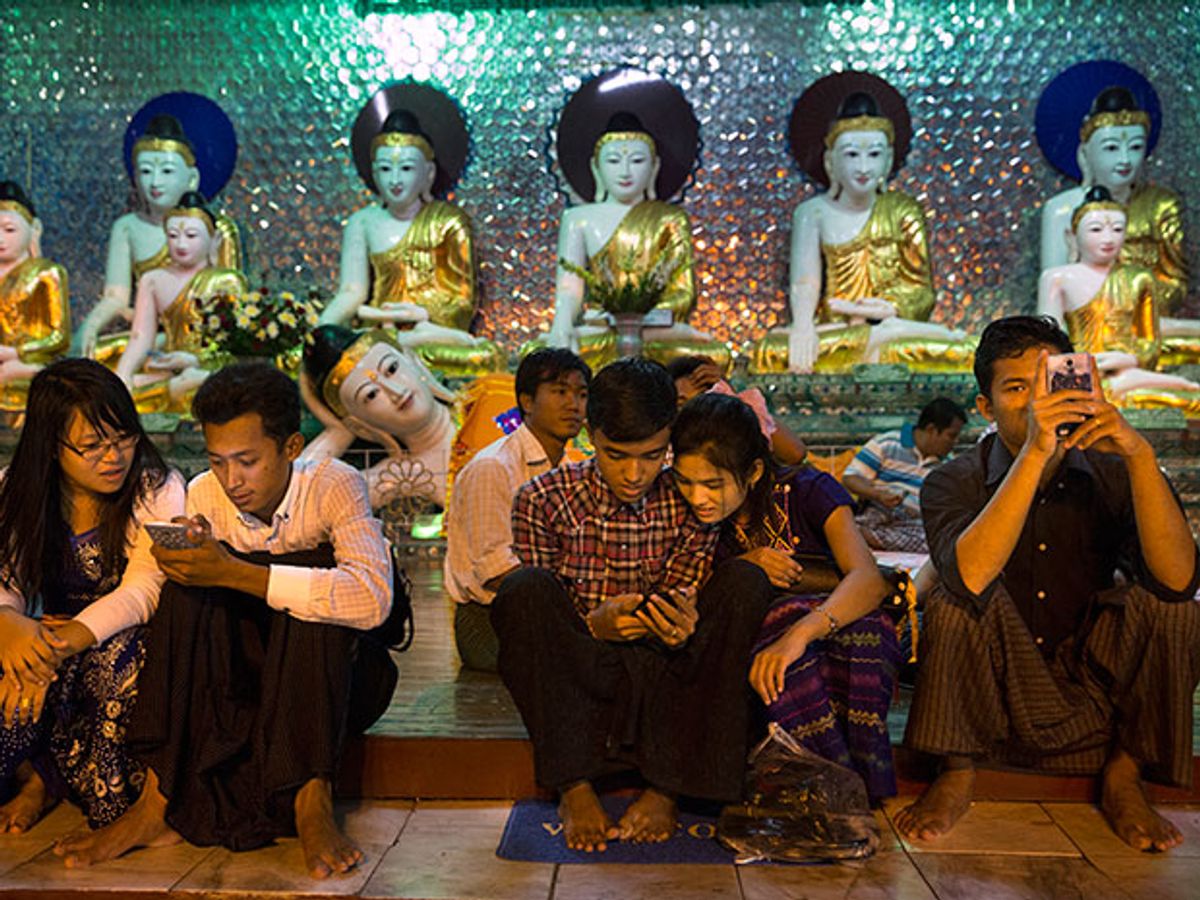In the past five years, no place in the world has witnessed a shift in mobile use so dramatic as the one taking place in Myanmar. The country, also known as Burma, was ruled by a military junta for nearly 50 years before a democratically-elected government was installed in 2011. At that time, only three percent of Myanmar’s 50 million residents had access to mobile phones.
Since then, the country’s newest carriers have rapidly built out infrastructure for connecting millions of new customers for the first time. These newcomers have generated enormous demand for service, which carriers and their contractors are scrambling to meet.
Telenor, a mobile phone company based in Norway, signed up more than half a million customers on the day it launched service for the city of Yangon in October of 2014. In the 20 months since the company debuted in Myanmar, it has registered more than 16 million new mobile users.
“Our biggest challenge has been and still is to build enough towers and sites,” says Joachim Rajaram, vice president and head of corporate communications at Telenor.
Burma is a “greenfield” opportunity, offering carriers and contractors a blank slate to build a network from scratch, free of the constraints typically imposed by historical decisions. That freedom is partly why 90 companies expressed interest in the opportunity to operate there back in 2013, when the government first said it would award licenses to a handful of carriers to compete with its state-owned wireless company.
Initially, Telenor had planned to offer 2G cellular and basic Internet service to rural areas while concentrating its 3G network in cities and towns. But consumer demand, driven by the availability of low cost smartphones and other devices that could be purchased for as little as $25, soon made this strategy outmoded.
“We very quickly realized that we (and everybody else) had in fact underestimated the rate at which customers would demand 3G,” Rajaram says. Now, Telenor has revised its plans to satisfy this “enormous pent-up demand” by offering 3G service through all of its sites. Rival carrier Ooredoo, based in Qatar, recently announced plans to launch 4G service in two major cities by the end of May.
Telenor’s growing network now includes 5,200 sites supported by a fiber backbone. The company aspires to reach 10,000 sites within the next three years. “In a short time, Myanmar will have a mobile network as good as any other country in the world,” Rajaram predicts.
The only limitation for the country’s carriers, including Telenor and Ooredoo, is that they have promised to share any towers they erect. Conventional wisdom within telecom used to be that building and maintaining a proprietary network was key to gaining a competitive advantage. But mobile carriers have lately turned to saving money by renting space on their towers instead.
Yves Monnier, chief commercial and strategy officer for Apollo Towers Myanmar Ltd. says this approach has dramatically reduced the total number of towers the country needs to build in order to offer service to all its citizens. Nearby Thailand, which is roughly the same size as Myanmar but does not have a shared tower agreement, is peppered with about 55,000 mobile towers. He expects Myanmar will be able to reach residents with only about 20,000.
That agreement saves some of the initial effort of figuring out where to place towers, but siting is still a huge issue for several reasons. One of Monnier’s biggest challenges has simply been acquiring land for the company’s towers, which stand 40 to 45 meters tall on average. Myanmar is a patchwork of restricted military, agricultural, and religious land. And unrest in other areas can make installation difficult.
Once Apollo Towers does identify a suitable site, it can be hard to figure out who actually owns it because recordkeeping for official deeds has not been a huge priority for the government or landowners. What’s more, many sites regularly flood during monsoon season. To protect its equipment, the company installs a platform to raise each tower two meters off the ground.
With all these logistical hurdles to overcome, it typically takes about 45 days from the time the company selects a site for its team to complete the installation.
But siting isn’t the only challenge. Once the towers are erected, powering the equipment perched high up on the poles is not a straightforward matter. When he arrived in Myanmar, Monnier expected the country to be well served by a modern power grid based on what others had told him. However, he found that the majority of residents still do not have reliable electricity.
By June of this year, Apollo will have installed 1,800 new towers for Telenor, which makes it one of the biggest tower operators in Myanmar. But roughly 70 percent of those towers run on noisy generators. These sites elicit complaints from neighbors, meaning the generators must be switched off at night. This problem has led to increasing pressure on electrical companies to expand their services, too.
At the end of the day, many of the wireless engineers working for fiber, tower, and mobile operators and contractors in Myanmar are foreign-born workers who brought their expertise to the country to solve these problems. But like many of them, Monnier doesn’t expect to stay. His company and others are training residents to take over operations once these brand new networks are up and running.




